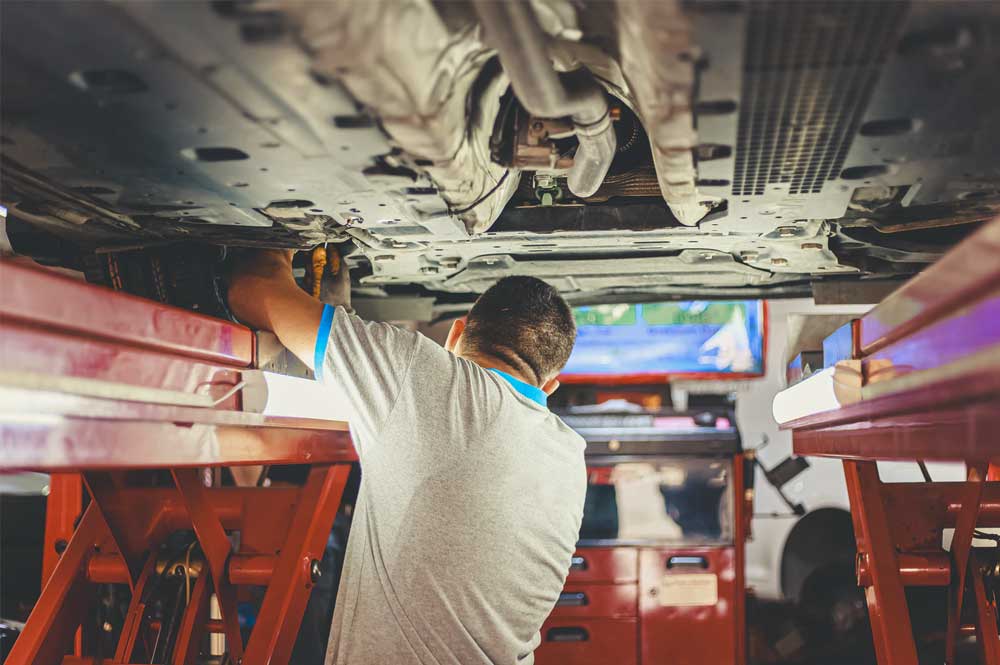MOT test explained


The MOT test (Ministry of Transport, or simply MOT) is an annual test of vehicle safety, roadworthiness aspects and exhaust emissions required in the United Kingdom for most vehicles over three years old.
The MOT test (Ministry of Transport, or simply MOT) is an annual test of vehicle safety, roadworthiness aspects and exhaust emissions required in the United Kingdom for most vehicles over three years old.
MOT tests are carried out at authorized test centers around the country, all of which display an official blue sign featuring three white triangles.
Details
An MOT involves dozens of checks on your car, ranging from the brakes and fuel system to lights, mirrors, seatbelts, windscreen wipers and exhaust systems. It doesn’t cover the condition of the engine, clutch and gearbox.
An average MOT test takes between 45 and 60 minutes, but there are a couple of other things to take into consideration.
First, if your vehicle fails the test and repairs are needed this will take longer.
A test center isn’t allowed to let you drive away a car that has failed an MOT until the problems are fixed, unless your existing MOT certificate is still valid, or you’re taking the car to have the faults fixed.
Second, the test might take an hour or less, but, even if there aren’t any repairs, this doesn’t mean your vehicle will only have to be at the garage for 60 minutes.
Test centers can require you to drop your vehicle off first thing in the morning and collect it when ready.
This means you should be prepared to be without your vehicle for the day.
The Vehicle and Operator Services Agency sets the maximum fee official test centers can charge for an MOT.
It’s currently £54.85 for cars and motor caravans and £29.65 for motorbikes, but many garages charge less than this – sometimes up to 50% less.
Search online for “cheap MOT” or “MOT discount” to find out how you can save money on your car’s next MOT.
An MOT might also be included in the cost of a full service for your car. While servicing your car regularly is a good idea, a service, even if it includes an MOT, is likely to be more expensive than an MOT on its own.
Checklist to help your car pass its MOT
Make sure you’re not caught out by any of the five simple reasons for a fail shown above, then inspect your car against our 11-point checklist below.
If you find any problems in the following areas, you can fix some yourself to help keep garage costs down.
Check for any damage such as splits in the tread, bulges, or cuts in the sidewalls.
Also check the tire pressure is correct – the car’s manual will list the right pressure and they might also be on the sidewall of the tire itself – and increase it at a petrol station if necessary.
Check all the seatbelts latch and fasten securely, and lock when you give them a sharp tug.
Remember, any tears or holes in the wiper rubber can mean an MOT fail.
The corner of the car should quickly return to its original position.
If it bounces more than twice, this could mean the shock absorbers are faulty and need to be checked.
If your car fails its MOT, the test center will give you a VT3O Certificate showing the reasons for the failure.
On 20 May 2018, the MOT categories for fails and passes changed.
If your car has a dangerous fault, you won’t be able to drive it away. Get a quote from the garage you got the MOT from if they do repairs, and then call around for some quotes from other local garages. You might be able to find the repairs cheaper even if they need to tow your vehicle to their garage.
If your car has a major fault you may be able to drive it away if it’s still roadworthy and your previous MOT has not expired yet.
If your MOT has run out and the car is roadworthy you can drive it to have the faults fixed and to a pre-booked MOT.
If you drive a car without an MOT under any other circumstances or drive a car with dangerous faults, you can be fined £2,500, be banned from driving and get three points on your license.
Taking the time to get your car ready for its MOT test can save you money in the long run.
If you want to give your car the best chance of passing the MOT test, follow our pre-MOT instructions.
Check your paperwork (invoices, your diary, dealer stamps in the service book in your car) to ensure you can provide correct answers to the following questions:
Do all your car’s engine management lights come on when you start the engine, then go out after a few seconds?
With the engine running, turn on your hazard lights, fog lights and headlights, then walk around the car and check they are all working.
If there is no one available to walk around the car while you are inside, wait for the evening light, then park the car near a wall.
With the engine running, press the brake pedal, and you should be able to see the brake lights reflect on the wall. You can repeat this process for the indicators; turn each indicator on separately, and check they work too.
Check the windscreen and rear-view mirrors for any damage.
Ensure that:
Is there any smoke at any time? Are there any strange smells from the engine, exhaust, or around the wheels, especially when hot? Start your car and go for a drive with the radio off.
Are there any other faults you are already aware of on your car, or is there anything wrong with how the car drives, looks, or sounds?
Save up to 40% by booking both your MOT and service at the same time. Many checks overlap, and these savings should be passed on to you. Be wary of garages not offering a discount if you book your MOT and service simultaneously.
Arrange another test:
These minor repairs can be retested at the same test center free within 24 hours:
When your car is three years old from the date of its registration it will need its first MOT test – and then it needs to be retested every year on the anniversary of its last MOT test.
Once passed, you’ll get an MOT test certificate with the date of the test on it, and the date of expiry so you know when the vehicle requires a new MOT. If you choose, you can get the vehicle retested up to a month (minus a day) before it expires and keeps the original renewal date.
If you’ve lost your MOT certificate you can simply use the GOV.uk tool to enter your registration number and vehicle make.
This will check both your MOT status and tax status in a matter of seconds. You’ll also be able to have a fresh MOT certificate sent to you for free to replace the lost one.
No. You can’t drive a vehicle without it having a valid MOT certificate. The only exception is that you’re able to drive your vehicle to its MOT test, so long as the test has been booked.
If you own a vehicle and are not planning on driving it you must keep it off the road and will have to declare it SORN.
Find out the risks of driving without an MOT in our full guide.
Many vehicles fail an MOT for small issues which could easily be prevented before the test. You might be surprised at what can fail an MOT – some problems are relatively minor.
It’s a good idea to prepare an MOT checklist a couple of weeks before the date of inspection to make sure your vehicle is in the best possible condition it can be, this will allow you to proactively fix the issues and avoid any inconvenient circumstances if the vehicle fails the test.
It is worth clarifying, however, if your car fails its MOT, then you cannot keep your renewal date.
There are some quick things you can do as a driver to give your vehicle the best chance of passing its MOT. We go into more detail below.
Keep your car clean, inside and out. A boot full of clutter and an excessively dirty car could lead to an examiner refusing to carry out the MOT.
Give number plates a clean as they need to be readable to pass the MOT.
Do council MOT test centers have better pass rates than normal garages?
Council MOT centers are council-run test centers that do not carry out repairs. For this reason, many people believe they are a better place to get an MOT done as they do not have a vested interest in failing and charging for repairs.
However, the data to support this is purely qualitative. By which we mean here are only written testimonials expressing that people, from experience, have had better luck getting their car to pass its MOT at a council test center than at other garages.

